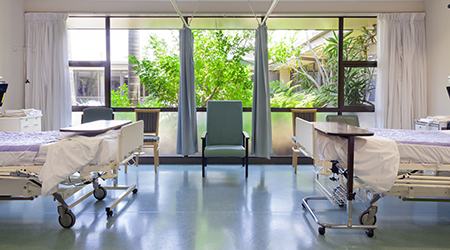What hasn’t changed in healthcare facilities in the last year? Nothing, that’s what. Facility managers have had to reassess and likely upgrade nearly every component, material and piece of equipment in emergency rooms, intensive care units and other patient care areas to effectively treat the influx of patients with COVID-19.
But far less attention has been paid to the shadow behavioral health pandemic, according to Forbes. That’s why healthcare systems should start planning now to integrate best practices in design so the physical spaces are well-equipped to provide patients with the support they need.
How will healthcare design teams proactively respond to the pending surge in behavioral healthcare needs? One idea is to adapt the flexible field hospital approach that allowed us to significantly expand care capacity at the height of the pandemic for use in behavioral health care delivery. By leveraging the latest innovations in pre-fabricated and pop up architecture, organizations could deploy community-responsive and integrated behavioral health clinics in and near schools, workplaces, retail spaces and places of worship.

 Building Disaster Resilience Through Collaboration
Building Disaster Resilience Through Collaboration Amae Health Expands to New York City
Amae Health Expands to New York City Hospital for Special Surgery Opens Two New Facilities in New Jersey
Hospital for Special Surgery Opens Two New Facilities in New Jersey Should We Be Testing Toilet Water in Patient Restrooms?
Should We Be Testing Toilet Water in Patient Restrooms? Healthcare Union Petitions for Increased Staff Safety at HCA Florida Hospitals
Healthcare Union Petitions for Increased Staff Safety at HCA Florida Hospitals